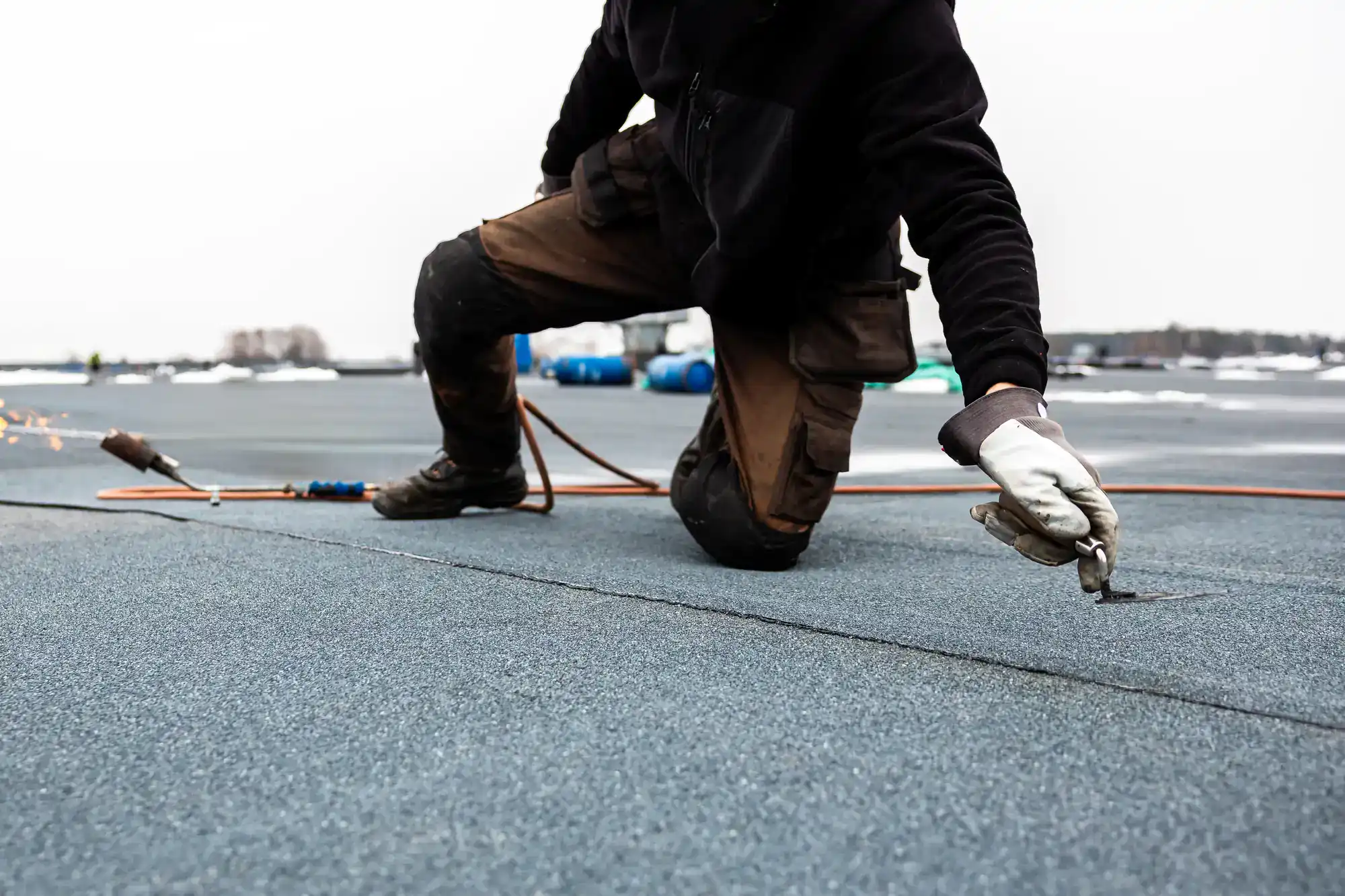
Hear from Our Customers
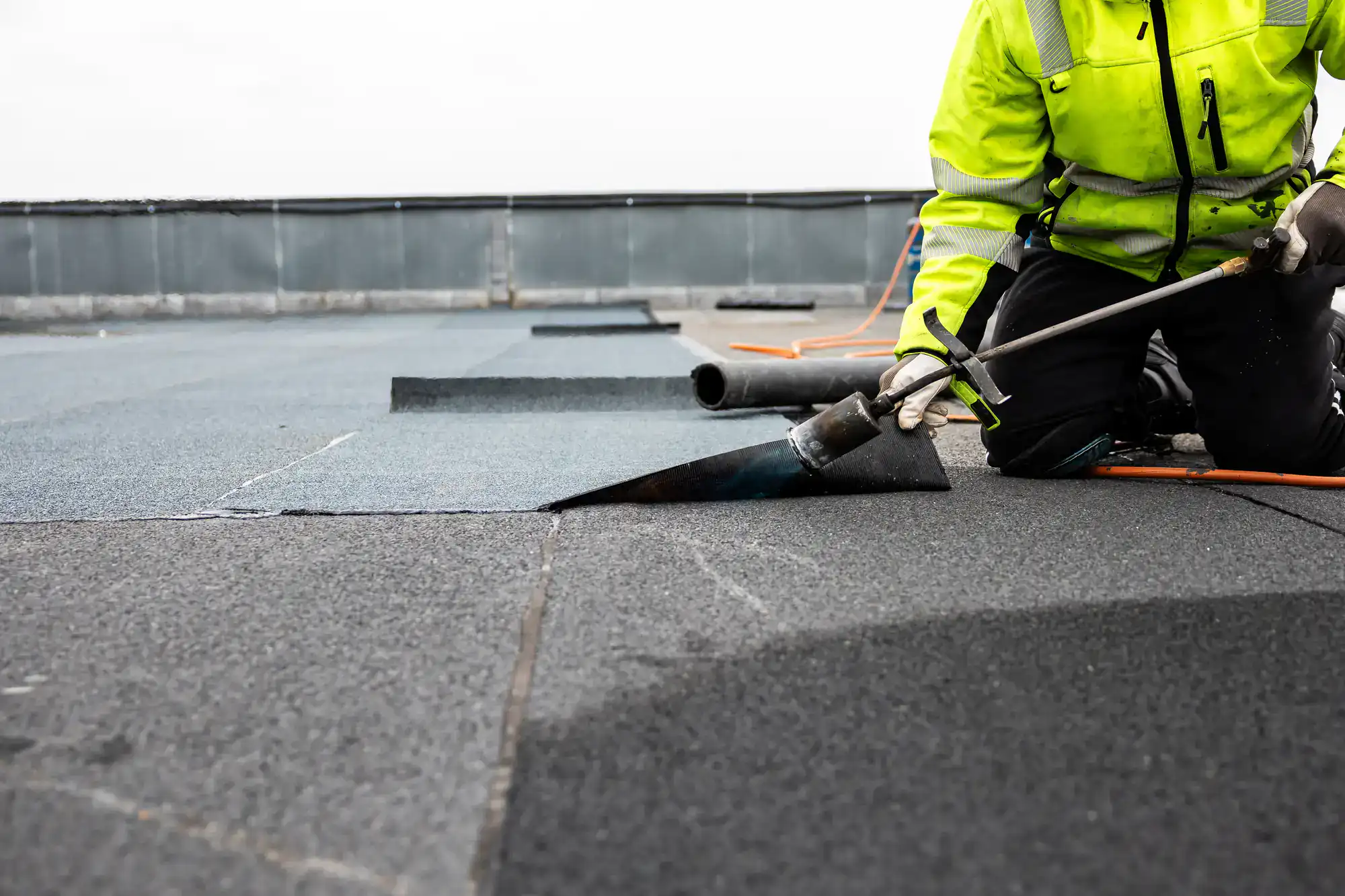
You’re tired of dealing with the same leak every time it rains. You’re done with contractors who promise the world but cut corners when it matters most. Here’s what changes when you work with professionals who actually understand flat roofing.
Your building stays dry during Long Island’s worst storms. No more buckets in the hallway or scrambling to move equipment when the weather turns. The right materials, properly installed, mean you can focus on your business instead of worrying about your roof.
Energy costs drop when your roof actually reflects heat instead of absorbing it. TPO and EPDM systems aren’t just about keeping water out—they’re designed to work with New Cassel’s climate extremes, from humid summers to freezing winters.
We’ve been fixing flat roofs in New Cassel since most of the competition was still learning the trade. As a family-owned business, we’ve built our reputation on something simple: doing what we say we’ll do.
Long Island weather doesn’t mess around, and neither do we. We know exactly what happens to flat roofs when installers skip steps to save money. We’ve seen the aftermath of “bargain” jobs that turn into expensive disasters. That’s why we do it right the first time.
Our crews understand the specific challenges that New Cassel properties face. From the salt air that accelerates deterioration to the freeze-thaw cycles that destroy poorly installed systems, we plan for the conditions your roof will actually encounter.
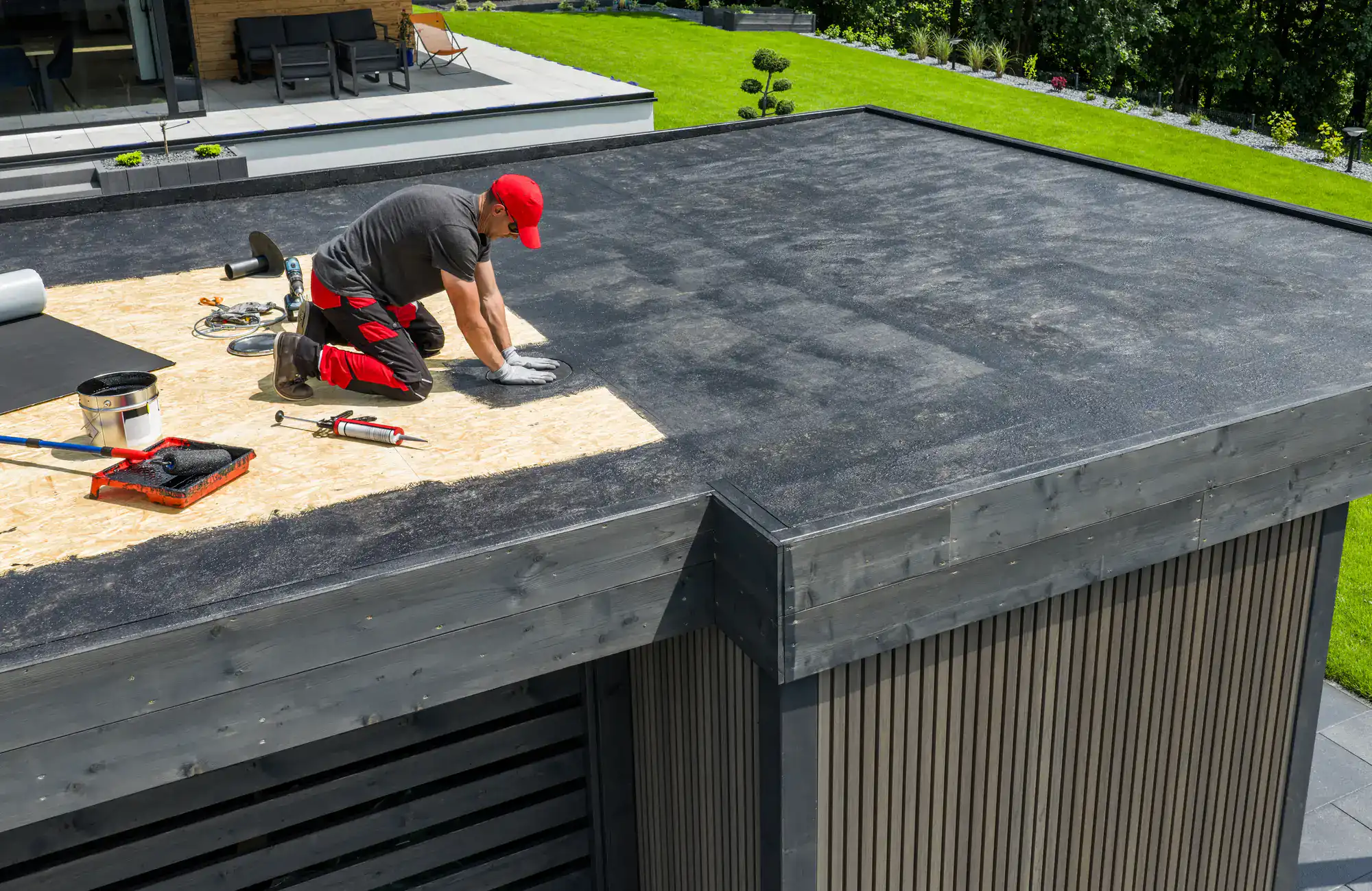
First, we inspect your current roof thoroughly. Not just a quick look from the ground—we’re up there checking drainage, measuring membrane thickness, and identifying the real source of any problems. You’ll know exactly what you’re dealing with before we start any work.
Next comes material selection based on your building’s specific needs. TPO for energy efficiency and UV resistance, EPDM for proven durability, or modified bitumen for high-traffic areas. We explain why each option makes sense for your situation instead of pushing whatever’s profitable.
Installation happens with the kind of attention to detail that prevents callbacks. Proper flashing around penetrations, correct drainage slopes, and heat-welded seams that actually stay sealed. We follow manufacturer specifications because we know shortcuts always come back to bite you later.
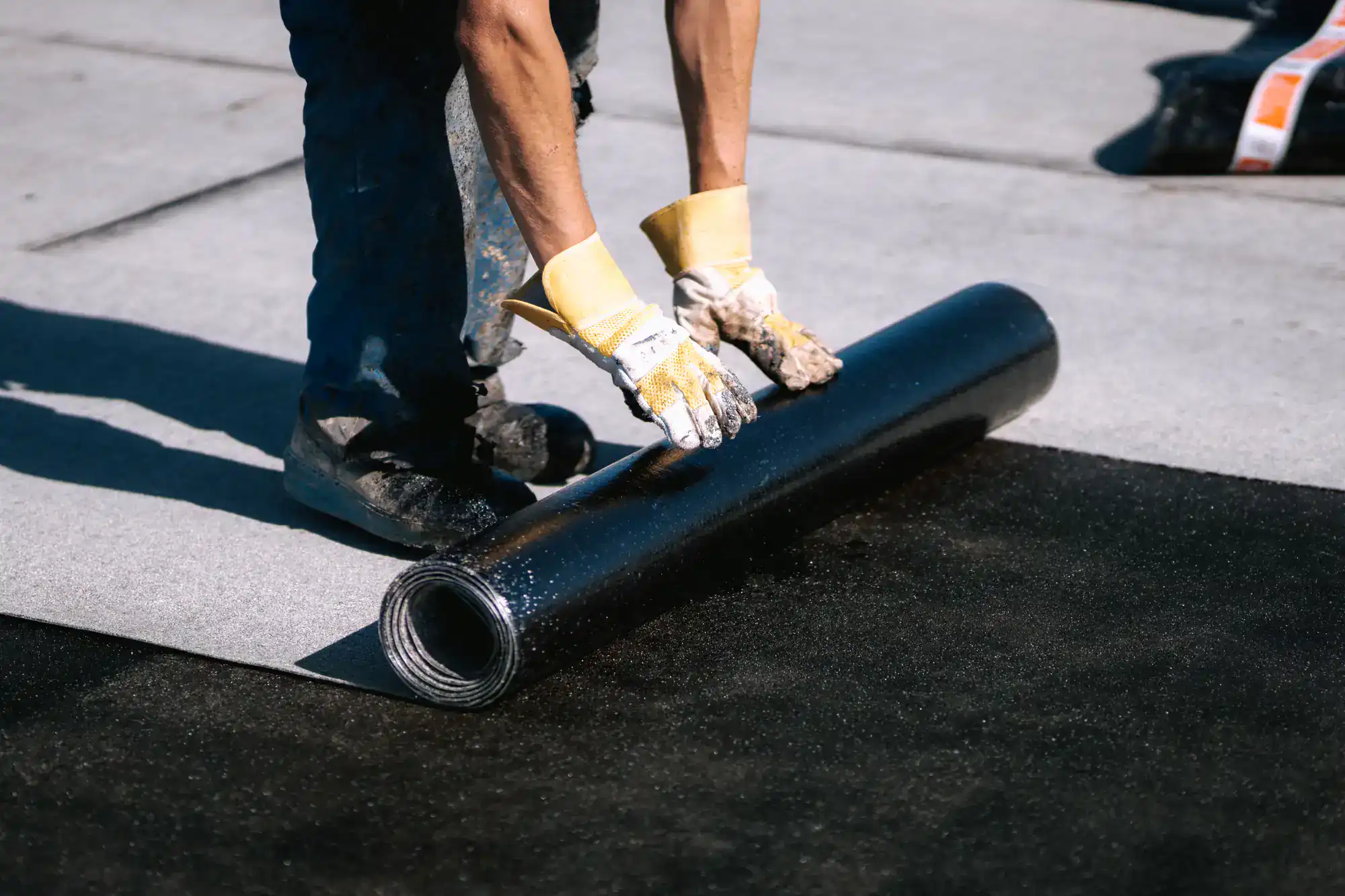
Ready to get started?
TPO roofing systems reflect Long Island’s intense summer heat while maintaining flexibility during brutal winter freezes. The white membrane reduces cooling costs significantly, and heat-welded seams create a watertight barrier that handles our coastal storms.
EPDM rubber roofing offers proven performance that’s been protecting New Cassel buildings for decades. Its elasticity accommodates the freeze-thaw movement that destroys rigid systems, and the synthetic rubber composition resists the UV degradation that shortens roof life.
Modified bitumen combines traditional reliability with modern polymer technology. Multiple layers provide redundancy that single-ply systems can’t match, making it ideal for high-traffic roofs or areas prone to punctures. The granulated surface reflects heat while providing excellent traction for maintenance access.
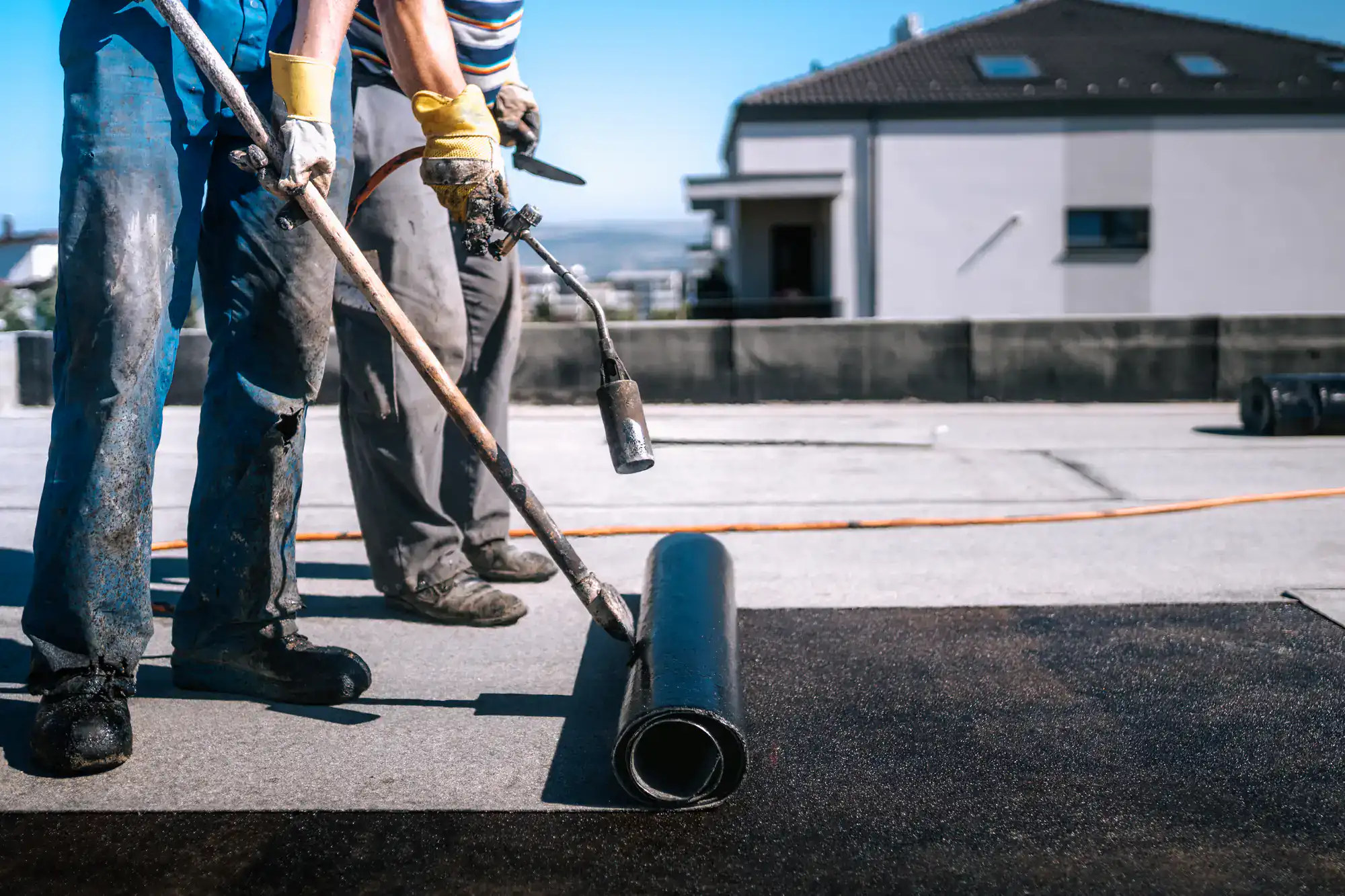
A properly installed flat roof should last 15-30 years depending on the material and maintenance. TPO systems typically provide 20-25 years of service, while EPDM can reach 30 years with proper care.
The key factor isn’t just the material—it’s the installation quality and ongoing maintenance. Long Island’s weather extremes accelerate wear on any roofing system, but professional installation with proper drainage and flashing details makes the difference between a roof that lasts and one that fails prematurely.
Regular inspections catch small issues before they become expensive problems. We recommend annual check-ups to clear drains, inspect seams, and address minor repairs that prevent major failures.
Poor flashing installation around roof penetrations causes the majority of flat roof leaks. When contractors rush jobs or cut costs, they often skimp on the detailed work around vents, HVAC units, and roof edges where water infiltration typically occurs.
Standing water is another major culprit. Flat roofs need proper drainage slopes and functioning drain systems to prevent ponding. Water that sits for more than 48 hours starts breaking down membrane materials and can void manufacturer warranties.
Seam failures happen when installation isn’t done correctly. Heat-welded TPO seams require precise temperature control and proper overlap. EPDM adhesive seams need clean surfaces and correct application. Shortcuts during installation always show up as leaks later.
TPO works best when energy efficiency is a priority. The white membrane reflects heat effectively, reducing cooling costs during Long Island’s hot summers. It’s also more resistant to UV damage and chemical exposure, making it ideal for commercial buildings with HVAC equipment.
EPDM offers superior flexibility and proven longevity. The rubber membrane handles temperature extremes better than rigid materials, expanding and contracting without cracking. It’s typically less expensive upfront and easier to repair if damage occurs.
Your building’s specific needs determine the best choice. High-traffic roofs benefit from EPDM’s puncture resistance, while buildings with significant cooling loads see better returns from TPO’s reflective properties. We assess your situation and explain which material makes the most sense.
Flat roof replacement typically ranges from $8-15 per square foot installed, depending on the material and complexity of the job. Basic EPDM systems start around $8-10 per square foot, while premium TPO installations can reach $12-15 per square foot.
Several factors affect the final cost: roof size, accessibility, existing roof removal requirements, insulation needs, and the number of penetrations requiring flashing work. Buildings with complex HVAC installations or multiple roof levels cost more due to additional detail work.
The cheapest bid usually isn’t the best value. Quality materials and proper installation prevent expensive callbacks and extend roof life significantly. We provide detailed estimates that break down material and labor costs so you understand exactly what you’re paying for.
Sometimes, but only when the existing roof structure can handle the additional weight and the current membrane is in decent condition. We evaluate the roof deck, insulation, and drainage before recommending a recover versus complete replacement.
Recover installations work well over single-layer systems like existing TPO or EPDM that haven’t failed structurally. However, if there’s significant moisture damage, multiple layers already present, or drainage issues, complete removal is necessary for a lasting repair.
Building codes limit the number of roof layers allowed, and some manufacturers void warranties on recover installations. We assess your specific situation and explain the pros and cons of each approach so you can make an informed decision about your roof investment.
Yes, we offer 12-24 hour emergency response for urgent flat roof leaks. When storms hit New Cassel, we prioritize calls from existing customers and handle emergency repairs to prevent further water damage to your building.
Emergency repairs focus on stopping active leaks and protecting your property until permanent repairs can be completed. We carry materials for temporary patches and have the equipment needed to work safely in challenging weather conditions.
Prevention beats emergency repairs every time. Regular maintenance and prompt attention to minor issues prevent most emergency situations. We recommend annual inspections and immediate repair of small problems before they turn into middle-of-the-night disasters.